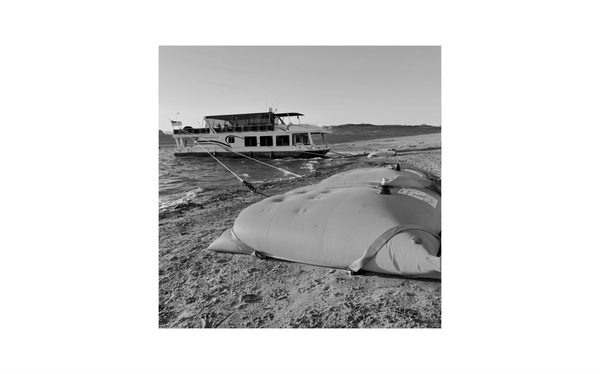Beach Bags In +50 mph Winds
Jun 02, 2021
Lake Powell is known for strong winds and unexpected storms that wreak havoc on houseboats and their crews. Watch this video to see the strong holding power of Beach Bags Anchors in action as +50 mph gusts hit a 75' x 22', 2-deck Sumerset houseboat anchored broadside to the wind at the mouth of Gunsight Canyon in May 2021. Wind direction, speed and force were monitored and recorded over a two day period using the combination of an anemometer (speed and direction) and load cells (force) placed on the lines attached to Beach Bags Anchors.
Date: 5/20/2021-5/21/2021
Test Description/Data
On May 19-21st Beach Bags Engineering performed wind load testing on a 75’ long, 22’ wide, 2 story Sumerset Houseboat with approximately ~975 square feet of surface area per side when perpendicular to the wind. The mooring location was a sand beach at the mouth of Gunsight Canyon. The weather for this time period called for constant winds of 25-35 mph with gusts up to 50 mph. The houseboat was anchored in a position to maximize wind loading, the windward side of the vessel was primarily oriented perpendicular to the prevailing winds. (This orientation is NOT recommended for typical vessel mooring but allowed recording of data for worst case scenarios - maximum wind forces acting upon the boat and subsequently, its Beach Bags Anchors). The vessel’s bow was positioned on a sand beach presenting ~10 Degree slope. The boat was ultimately anchored with two ¾’’ lines attached to a windlass and two Beach Bags 6500 Anchors (~6,255 lbs.) on the starboard (windward) side tensioned between 400-600 lbs. One line was attached to a windlass and a Beach Bags 6500 Anchor on the port side. Finally, there were two Beach Bags 4500 Anchors (~4,587 lbs. each) positioned on each side of the bow. They were tightened with Beach Bags’ Tightrope block and tackle pulley system. The setup is shown and illustrated below.


Below are additional pictures with details of the test setup and measuring equipment.

During the test period the strongest gust recorded measured 53.2 mph. The wind direction angle at that time was 59 Degrees. This resulted in a combined load of 2,526 lbs. on the boat’s windward (starboard) anchor lines. Below is a graph of continuous data for the load on the lines taken from the 10K load cells, with the wind speed and direction data taken from the anemometer.

The test period resulting in the highest forces on the anchor lines (and Beach Bags Anchors) was a gust measuring approximately 48.9 MPH, at a wind direction angle of approximately 85 Degrees (nearly completely perpendicular) to the vessel. This event resulted in a combined load of 3,108 lbs. See details below.

As illustrated by the data, forces on houseboat anchor lines, and subsequently its anchors, will vary based on wind speed and its angle in relation to the vessel. Beach Bags Anchors holding power will vary based on environmental factors including, but not limited to the coefficient of friction of the surface on which the anchor is placed and the surface’s degree of slope.
Assuming a flat slope and 75% coefficient of friction, properly filled Beach Bags Anchors have the following holding power.

Assuming proper anchor line tension and the conditions presented above, each Beach Bag Anchor (4500, 6500, and 8500) would have individually possessed the holding power necessary to safely anchor the starboard side of the houseboat during the 53.2 mph and the 48.9 mph wind events. To increase safety in anticipation of unforeseen events, Beach Bags always recommends placing two anchors on each of the starboard and port sides of the vessel.


